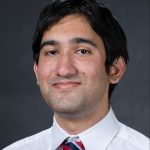I just got back to downtown Phoenix after spending time out at Ft. Defiance in the Navajo Nation for part of my Internal Medicine rotation. Rural medicine was an incredibly informative and unique experience, and there was a lot to see and experience that never came up in my prior typical rotations. That said, I am a writer for our interprofessional section, and one particular bit of my rotation caught my eye in that regard.
Out at Tsehootsooi Medical Center, I got the pleasure of experiencing interdisciplinary rounds for the first time. They are almost exactly what they sound like. Most upperclassmen in medical school are used to traditional rounds, in which you and your team discuss your patients. Interdisciplinary rounds is a simple, but crucial and effective expansion of that idea. The attending physician discusses their patients with a wide array of different specialists working in the hospital. I should point out that most hospitals have these rounds, but rural sites are often a bit more hands-on than our traditional urban sites, so this was the first chance I got to actually attend and partake in this. It was an impressive experience; the rounds included representatives from nursing, physical therapy, occupational therapy, discharge planning, pharmacy, ICU specialists, insurance specialists, and more. It was awesome to watch the way the complete picture of a patient’s care could be put together at these rounds; concerns beyond what I was used to helping address in the hospital were almost always brought up for every patient, and it did wonders for tuning my ability to consider all aspects of a patient’s care. Are their current meds the ideal ones to continue at home? What specific sorts of PT and OT do we want them to delve into? Do they have follow up scheduled and all the equipment they need at home? Ultimately, does anyone see a problem in their individual specialty that needs to be discussed, and how can we make sure that problem isn’t missed before the patient goes home?
The simplest way to summarize is that these rounds made it easy to see how much there is to patient care beyond just throwing in a line about needing a particular referral or service in a presentation and leaving it to the residents to figure it out. It can be a useful skill for students lucky enough to get involved; as one might think, you present quite differently to an interdisciplinary team than to an attending or resident. As previously mentioned, plenty of hospitals have these, though students aren’t always directly involved. To any of my peers looking to pick up some new presentation skills and wanting to see their patients’ cases from new perspectives, pushing your attendings to let you tag along for these sorts of rounds may be an excellent route for you. You may learn your patients had complaints or problems that you weren’t even aware of, or you may get to see some inner workings of how problems you were aware of get addressed by different disciplines.
Cheers, and happy rounding and pre-rounding to everyone in their clinical years!
Salman Azfar is a fourth year student at the University of Arizona, College of Medicine Phoenix. He graduated from UCLA in 2020 with a degree in Physiological Science. He loves dodgeball, swimming, playing games, and spending time with his friends and family. He can be reached at smazfar@arizona.edu.


